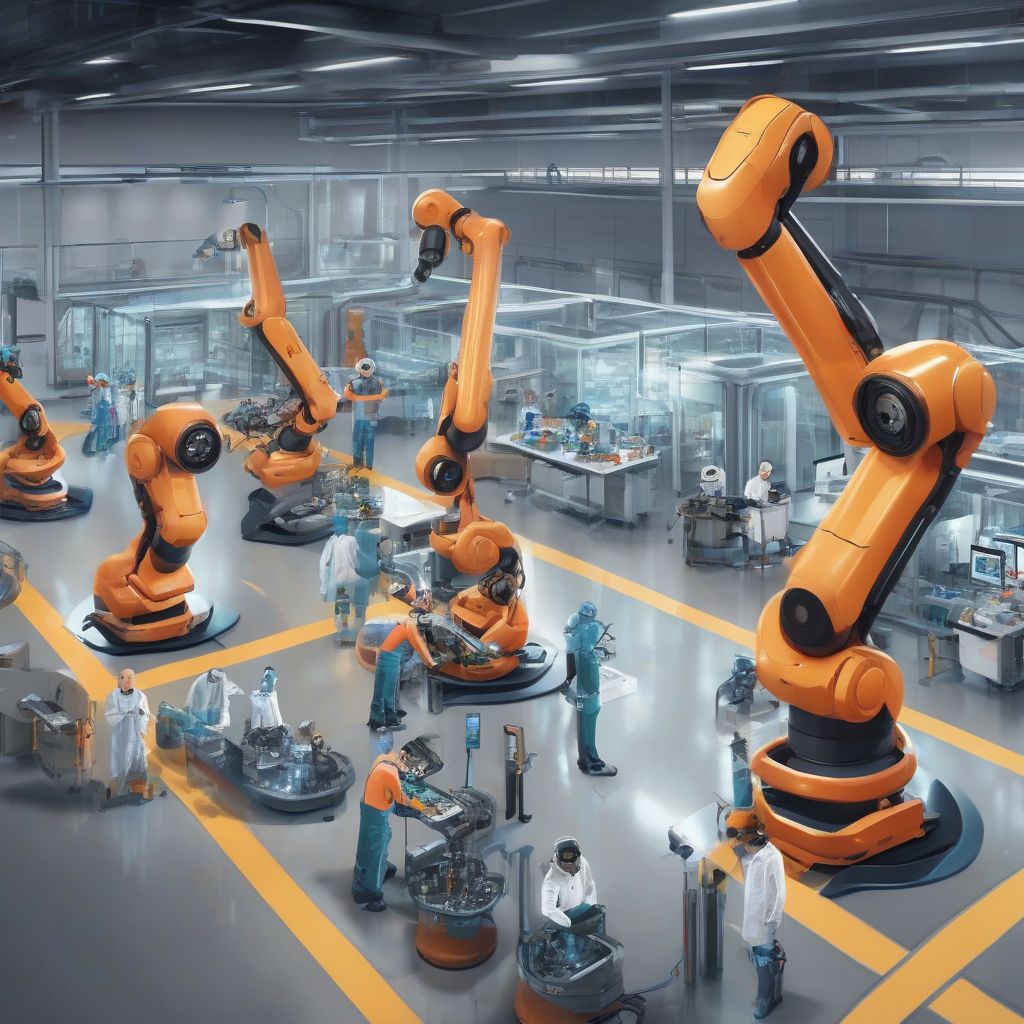Imagine a factory floor where robots work tirelessly alongside human counterparts, not as mindless machines following pre-programmed paths, but as intelligent collaborators adapting to changing environments and optimizing production in real-time. This is the promise of autonomous systems in industrial automation – a paradigm shift that’s transforming the manufacturing landscape as we speak.
Understanding the Power of Autonomous Systems
Autonomous systems are more than just sophisticated robots. They represent a convergence of cutting-edge technologies like artificial intelligence (AI), machine learning, the Internet of Things (IoT), and advanced robotics. This potent combination empowers these systems to:
1. Make Decisions and Learn Independently
Unlike traditional automation that relies on rigid programming, autonomous systems leverage AI and machine learning to analyze data, identify patterns, and make decisions with minimal human intervention. This ability to learn from experience allows them to adapt to unexpected situations, optimize processes, and even predict potential problems before they arise.
2. Enhance Efficiency and Productivity
By automating complex tasks and optimizing workflows, autonomous systems significantly enhance efficiency and productivity. They can work continuously without breaks, reducing downtime and increasing output. This translates to faster production cycles, reduced labor costs, and a significant boost in overall operational efficiency.
3. Improve Safety and Reduce Risks
Autonomous systems can take over hazardous or repetitive tasks, protecting human workers from potential injuries and creating a safer work environment. Their ability to operate with precision and consistency also minimizes errors and reduces the risk of accidents.
 Autonomous Robots in Factory
Autonomous Robots in Factory
Applications of Autonomous Systems in Industrial Automation
The transformative potential of autonomous systems is already being realized across various industries:
1. Manufacturing and Production
From assembly lines to quality control, autonomous systems are revolutionizing manufacturing processes. Robots equipped with machine vision can perform intricate tasks with high precision, while AI-powered systems optimize production schedules and manage inventory in real-time.
2. Logistics and Supply Chain
Autonomous guided vehicles (AGVs) and drones are transforming logistics and supply chain management. These systems can transport materials within warehouses, optimize delivery routes, and even handle last-mile delivery, increasing efficiency and reducing transportation costs.
3. Energy and Utilities
In the energy sector, autonomous systems are being deployed for inspection and maintenance of critical infrastructure like pipelines and power grids. Drones equipped with sensors can detect anomalies and potential hazards, enabling proactive maintenance and minimizing downtime.
4. Healthcare and Pharmaceuticals
From automating laboratory tasks to assisting with surgeries, autonomous systems are making significant inroads in healthcare. Robots can handle medication dispensing, assist with patient monitoring, and even perform complex surgical procedures with precision exceeding human capabilities.
The Future of Work: Collaboration and Upskilling
While the rise of autonomous systems raises concerns about job displacement, the reality is far more nuanced. By automating repetitive and mundane tasks, these systems free up human workers to focus on higher-value activities requiring creativity, critical thinking, and problem-solving skills.
This shift necessitates a focus on upskilling and reskilling the workforce, equipping them with the knowledge and expertise to thrive in this new era of human-machine collaboration. The future of work will see humans and autonomous systems working together, leveraging their respective strengths to achieve greater efficiency, productivity, and innovation.
Embracing the Autonomous Future
The integration of autonomous systems in industrial automation is not a distant dream; it’s a rapidly unfolding reality. As technology continues to advance, we can expect to see even more innovative applications emerge, further blurring the lines between the physical and digital worlds.
Embracing this transformative technology requires a strategic approach that focuses on:
- Investing in research and development: Continuous innovation is crucial to unlocking the full potential of autonomous systems.
- Developing industry-specific solutions: Tailoring solutions to address the unique challenges and opportunities of different sectors will drive wider adoption.
- Fostering collaboration between academia and industry: Bridging the gap between research and real-world application will accelerate the development and deployment of practical solutions.
- Addressing ethical and societal implications: Proactively addressing concerns related to job displacement, data privacy, and algorithmic bias is essential to ensure responsible and equitable deployment of these technologies.
The future of industrial automation is inextricably linked to the rise of autonomous systems. By embracing this transformation and investing in the necessary infrastructure, training, and ethical frameworks, we can unlock a new era of manufacturing characterized by unparalleled efficiency, productivity, and innovation.
[amazon bestseller=”industrial automation”]
Conclusion
The journey towards an autonomous future in industrial automation is well underway. By understanding the capabilities of these transformative systems and addressing the accompanying challenges, we can harness their power to shape a more efficient, productive, and sustainable future for manufacturing and beyond. This is an exciting time to witness the convergence of cutting-edge technologies and human ingenuity, paving the way for a new era of possibilities in the industrial landscape.
